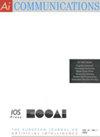基于有序概率密度加权和注意机制的PCB插件焊点缺陷YOLOv3检测方法的改进
IF 1.4
4区 计算机科学
Q4 COMPUTER SCIENCE, ARTIFICIAL INTELLIGENCE
引用次数: 3
摘要
印刷电路板(PCB)是电子产品的心脏部件,其缺陷检测是生产过程中PCB质量控制的基本要求。传统的视觉检测方法需要人工设计特征,检测精度较差,漏检率和误检率较高。针对上述问题,本文提出了一种基于有序概率密度加权和注意机制相结合的PCB插件焊点缺陷改进YOLOv3 (You Only Look Once)检测方法。首先,为了获得优先级更高的先验盒,采用有序概率密度加权(OWA)方法对K-means生成的多组先验盒进行优化。然后,为了获得更有效的特征信息,在骨干网中加入了挤压激励机制(SE)。在特征检测网络中加入了卷积块注意模块(CBAM)的注意机制,同时在检测网络输出层中对三层特征进行融合。最后,为了加快模型的收敛速度,提高模型的精度,采用广义联合广义交联(GIoU)对网络损失函数进行改进,并将COCO数据模型应用于PCB焊点缺陷的迁移学习训练。经过测试,改进后的网络平均检测准确率由84.35%提高到96.69%,收敛性优于原网络。研究表明,基于YOLOv3的改进方法更适合PCB插件焊点缺陷检测的工业应用。本文章由计算机程序翻译,如有差异,请以英文原文为准。
Improved YOLOv3 detection method for PCB plug-in solder joint defects based on ordered probability density weighting and attention mechanism
Printed Circuit Board (PCB) is the heart component of electronic products, and its defect detection is the basic requirement of PCB quality control in the production process. Traditional visual detection methods need artificial design features, so their detection accuracy is poor, and the rate of missed and false detection is high. To solve the above problems, this paper proposes an improved YOLOv3 (You Only Look Once) detection method for PCB plug-in solder spot defects based on the combination of the ordered probability density weighting and the attention mechanism. First, in order to obtain a higher priority priori box, the ordered probability density weighting (OWA) method is used to optimize the multiple sets of a priori boxes generated by K-means. Then, to get more effective feature information, the Squeeze-and-Excitation mechanism (SE) is added to the backbone network. In the feature detection network, the Convolutional Block Attention Module (CBAM) attention mechanism is joined, at the same time in the inspection network output layer three layer feature are fusions. Finally, in order to accelerate the convergence speed of model and improve the accuracy of the model, the network loss function was improved by using the generalized joint generalized intersection over union (GIoU), and the COCO data model was applied to PCB solder spot defect training by transfer learning method. After testing, the average detection accuracy of improved network is improved from 84.35% to 96.69%, and the improved network has better convergence than the original network. The study shows that the improved method based on YOLOv3 is more suitable for industrial application of PCB plug-in solder spot defect detection.
求助全文
通过发布文献求助,成功后即可免费获取论文全文。
去求助
来源期刊

AI Communications
工程技术-计算机:人工智能
CiteScore
2.30
自引率
12.50%
发文量
34
审稿时长
4.5 months
期刊介绍:
AI Communications is a journal on artificial intelligence (AI) which has a close relationship to EurAI (European Association for Artificial Intelligence, formerly ECCAI). It covers the whole AI community: Scientific institutions as well as commercial and industrial companies.
AI Communications aims to enhance contacts and information exchange between AI researchers and developers, and to provide supranational information to those concerned with AI and advanced information processing. AI Communications publishes refereed articles concerning scientific and technical AI procedures, provided they are of sufficient interest to a large readership of both scientific and practical background. In addition it contains high-level background material, both at the technical level as well as the level of opinions, policies and news.
 求助内容:
求助内容: 应助结果提醒方式:
应助结果提醒方式:


